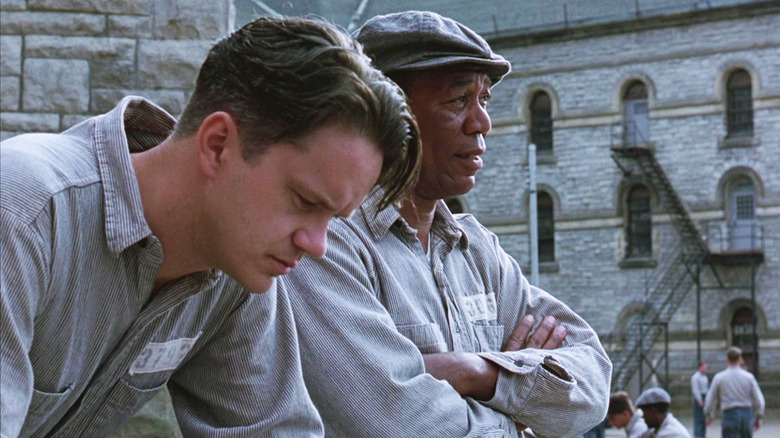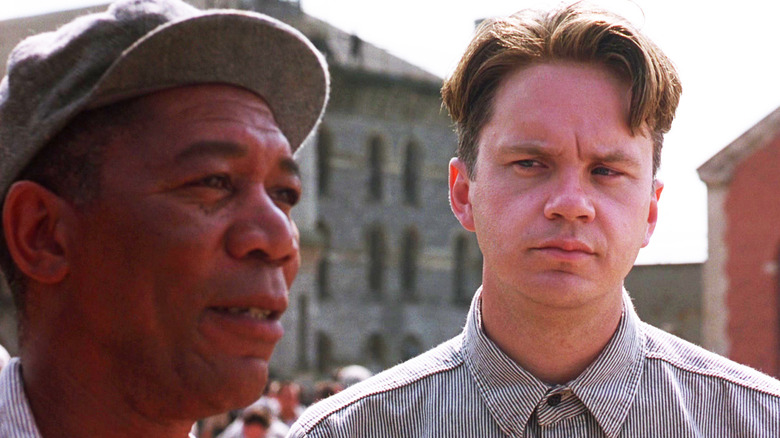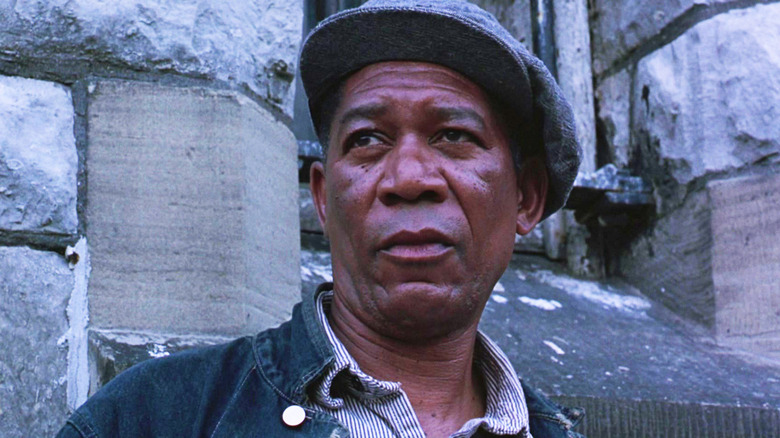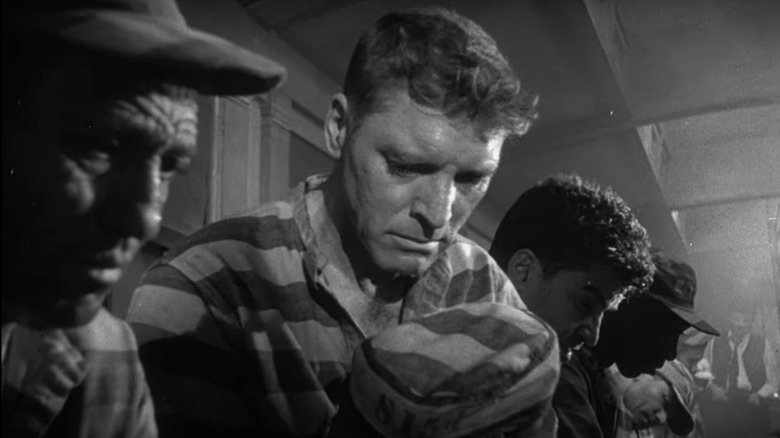How John Frankenheimer 'Directly' Inspired Frank Darabont's Work On The Shawshank Redemption
"The Shawshank Redemption" isn't just known for turning Morgan Freeman narration into a meme. If you didn't grow up in the age when Frank Darabont's inspirational prison drama was replayed endlessly on TV, you might not be aware of just how beloved his 1994 effort is. Though it struggled to make back its $25 million budget, the movie went on to gain seven Academy Award nominations and see massive home video sales. When it wasn't being shown repeatedly on TNT, it was topping lists of the best movies of the '90s and generally came to represent the casual movie fan's idea of what a "good film" was.
In hindsight, it's easy to see why "The Shawshank Redemption" resonated so profoundly. Alongside Tim Robbins and Morgan Freeman's memorable performances, the project had some pretty powerful inspirations propelling it. Based on the 1982 Stephen King novella "Rita Hayworth and Shawshank Redemption," Darabont's first feature film as director had the benefit of a crowd-pleasing story to work from. The tale of Robbins' Andy Dufresne forming a bond with fellow lifer "Red" (Freeman) in Shawshank State Prison, before eventually escaping and finding salvation on the shores of Mexico was an uplifting experience — harrowing prison abuse scenes aside.
But Darabont wasn't just motivated by Stephen King's attempt to prove he could write more than horror. The filmmaker was heavily inspired by one of his heroes — director John Frankenheimer, who had helmed the classic prison drama "Birdman of Alcatraz." That 1962 effort was based on the true story of convicted murderer turned ornithologist Robert Stroud, and was for Darabont even more influential than other classic prison films such as "Cool Hand Luke," or "Escape from Alcatraz." But beyond Frankenheimer's work, it seems Darabont was also directly inspired by his hero during a chance encounter.
Scouting Shawshank State Penitentiary
"The Shawshank Redemption" filmed on-location at the disused Ohio State Reformatory in Mansfield, Ohio — which doubled as the fictional Shawshank State Penitentiary in Maine. Shooting took place over three months which sounded like they were a real slog. According to Vanity Fair, "Shawshank's schedule was particularly brutal: workdays were 15 to 18 hours, six days a week, over three humid months." Ohio State might not have been the most comfortable location in which to film, but it did provide some eye-catching Gothic architecture and a "timeless style" that producer Niki Marvin told the LA Times was important for the production — even if it did "give [her] the willies."
Marvin had helped Darabont research prisons across the US and Canada for five months, during which time they visited a prison in Nashville, which the director came very close to choosing over Ohio. As he told Deadline:
"When we were scouting prisons to use, we were down to really two choices. I kind of knew in my heart of hearts that the Ohio State Reformatory was going to wind up being the one — I just really had a feeling about that — but, for due diligence, we decided to also go down to Nashville because there was a big prison there as well and we wanted to check out. And, as an aside, some years later I wound up using the Nashville facility for all the exteriors in The Green Mile."
Though Darabont would ultimately pass on the Nashville facility, It turned out to be a worthwhile trip for the director, who just happened to run into his hero, Frankenheimer, while there.
A chance encounter
Asked by Deadline about the history of prison films, Darabont revealed that, in his opinion "at the top of the list" of great prison films was Frankenheimer's "Birdman of Alcatraz": "Oh my gosh, he was such a very gifted director. He was quite an inspiration to me, the 'Shawshank' project. And not just conceptually, either, he was also directly inspirational."
It turns out that while Darabont and his team were scouting the Nashville prison, he noticed another group who were seemingly on a similar scouting trip. As the director watched this other crew, he noted that the "guy leading the way," looked a lot like Frankenheimer, only to be caught completely off-guard when it turned out to be the legendary filmmaker:
"He looked over and saw me, and I thought: 'Oh my God, that is John Frankenheimer!' He totally stopped and changed gears and came in my direction. He came striding up with this big smile on his face and shook my hand and said, 'Hey, I'm John Frankenheimer.' And I said, 'Yes I know! And what a crazy thing to meet you here.'
Frankenheimer was, as it turns out, scouting for an HBO film he was working on, and according to Darabont did indeed end up shooting at the Nashville prison. During their chance encounter, the "Manchurian Candidate" director was apparently warm and encouraging, asking Darabont about his project and himself, and generally being supportive. That had a profound effect on Darabont, who said "It impressed [him] so much at the time and it continues to impress [him]," especially since he considers "Birdman of Alcatraz" the "very DNA of Shawshank."
Frankenheimer was the blueprint
Considering how indebted a film like "Shawshank" is to films like "Birdman of Alcatraz," Darabont's serendipitous meeting with Frankenheimer seems like it was almost fated to happen. Though he was primarily motivated by bringing Stephen King's novella to the big screen in a way that did it justice, Darabont was clearly hugely influenced by Frankenheimer, and to meet him right as he was gearing up to direct his first major studio film must have given him such a boost prior to filming. Even Steven Spielberg has cited Frankenheimer as a major influence, which goes a long way to conveying just how big a deal the guy was.
Ultimately, the Ohio location worked out better for the film, which required a completely disused site in order to avoid hours of security checks for the production crew and accommodating ongoing prison business. But it would have been a nice connection to have with Frankenheimer had Darabont chosen to film in Nashville.
As it stands, "Shawshank" couldn't have turned out better, providing Darabont with an impressive start to his directing career and transporting audiences with its sweeping narrative and uplifting ending. Not bad considering Darabont was, at one point, close to handing over directing duties to Rob Reiner, who offered him $3 million for the privilege. But, as Darabont told Vanity Fair in a quote worthy of any poignant Morgan Freeman narration, "You can continue to defer your dreams in exchange for money and, you know, die without ever having done the thing you set out to do."



